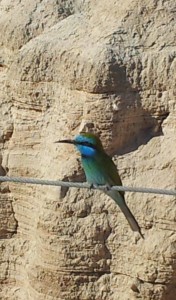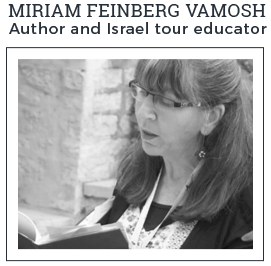Turning Ourselves Inside Out
Turning Ourselves Inside Out
Another Yom Kippur has passed. Our family shares the hope it symbolizes for Jews everywhere, that our efforts to forgive ourselves and others bear redemptive fruit. For Arik it is a more “awe-ful” day, as it marks the beginning of the war in which he was catastrophically injured in 1973, and the beginning of his successful, unceasing efforts to build a new life outside the parameters of what would ever be possible again.
As I write, I can hear my neighbors beginning to build their sukkah, the temporary dwelling in which they will have their meals. For friends less familiar with our Jewish traditions, I would like to introduce you to this wonderful concept. Yom Kippur is devoted to our inner selves. It is a time to focus on rebuilding our spiritual bridges as we consider how more to strive for our better selves in the year to come. Later this week we will begin the week-long celebration of Sukkot, the “feast of booths.” Like so many of our holidays, it has at least two levels: Leviticus 23:33–44 tells us that we are to dwell in booths to remember that the Israelites lived in such flimsy temporary dwellings during the 40 years of wandering in the desert, and it’s the time of the fall harvest.

Maya and Nili, now a mother of two and a mother-to-be respectively, having breakfast in our sukkah way back when.
Jewish tradition tells us that we should begin to build our sukkah immediately after Yom Kippur ends – that same evening – four days before Sukkot actually begins. We are told that this is a way to bring together the personal (the soul-searching of Yom Kippur) with the universal (the outside world). For one week, leaving our perfectly good four walls, we turn ourselves “inside-out”. Arik and I taught our girls, Maya and Nili, that as we sat in the sukkah we built on our porch, we should think about families the world over who live their whole lives in structures no stronger than this, or people who have far less than this due to natural disaster or war.
These are the perfect moments to focus on the universal aspects of Judaism – the oft-repeated commandment to do justice (Prov. 21:3; Micah 6:8). At this special time, when the Muslim festival of Id al-Adha, the holiday of the sacrifice and our Yom Kippur coincide for the first time in 34 years, I like to think of the verse where God ponders the fate of Sodom and Gomorrah and God’s hopes for Abraham, the father of both our faiths and ponder the possibilities in interfaith relations: “For I know him, that he will command his children and his household after him, and they shall keep the way of the Lord, to do justice and judgment; that the Lord may bring upon Abraham that which he hath spoken of him.” (Gen. 18:19).
What the bee-eater told me
Last fall, while guiding a group at Qumran National Park, I had the most wonderful opportunity to snap a picture of a bee-eater. Every fall and spring these iridescent migrants visit us. In a 2011 article in the journal Behavioral Ecology and Sociobiology, researchers Nir Sapir, Martin Wikelski, Roni Avissar, Ran Nathan inform us that the bee-eaters apparently know the best time do depart on their migration (see Jeremiah 8:7 re the storks’ talent at this). Their research suggests “that a trend of increasing temperature and decreasing barometric pressure lasting a few days can potentially provide a reliable cue for the birds to adjust their digestive, muscular, and circulatory systems in preparation for the enduring cross-country flight.” High temperatures, these scholars say, facilitate soaring – an energy saver as opposed to flapping their wings. Individual birds have to gauge their go-no-go for that day on a mechanism they evolved for gauging temperature and pressure. These abilities can be essential to the survival of the species.
Now, I’m no bee-eater, but this is what I glean: Abraham sensed the changing conditions when he smashed the idols in his father’s “idol store,” according to legend, and he soared upward. We, his descendants seem to have lost the ability to soar, constantly doing the wrong thing at the wrong time and flapping our wings to exhaustion or with great harm to our species. It is the responsibility of each of us to get it a little more right in the year to come.
Read my version for children of the ancient legend “Abraham in the idol store” in the chapter on worship in my book Teach it to Your Children: How Kids Lived in Bible Days.


